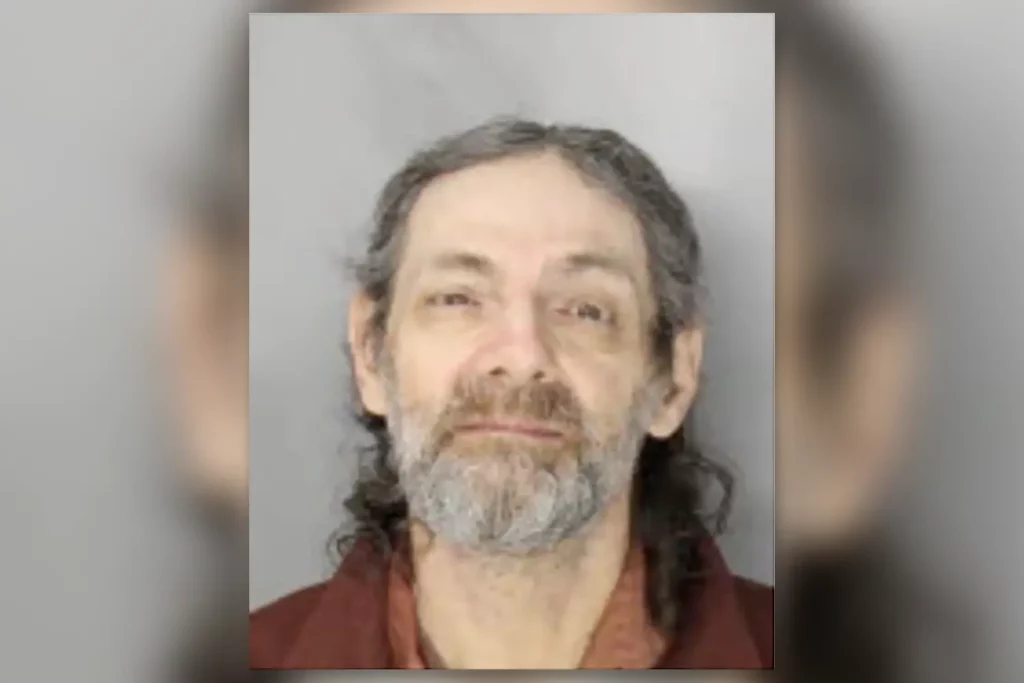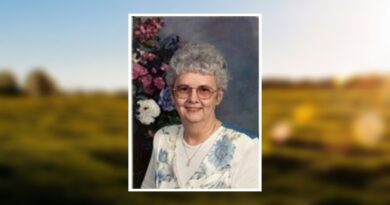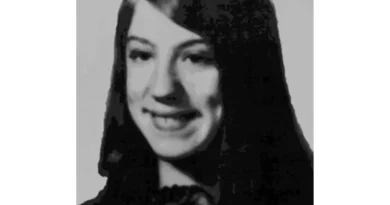The Murder of Girl Scout Shauna Howe in Oil City Pennsylvania
Oil City, Pennsylvania, in the early nineteen nineties was a place that prided itself on familiarity and routine. The community was close knit, families knew their neighbors, and children still walked to school and to local events without the constant fear that would later settle over the town. Halloween was one of the highlights of the year, especially for younger children, who looked forward to costumes, candy, and neighborhood parties.
Into this setting stepped eleven year old Shauna Melinda Howe, a bright, energetic Girl Scout who lived on the south side of Oil City. She was known as a kind and playful child who loved her family and enjoyed school and activities with her friends. In many ways, she represented the innocence the town believed it still had. No one imagined that one autumn evening in October would shatter that sense of security and leave a scar that would last for decades.
As October 31 approached in 1992, Halloween plans were already in motion. Parties were scheduled, trick or treat routes were familiar, and parents were preparing their children’s costumes. That is why the events that unfolded on October 27, 1992, felt so jarring. The horror did not strike on Halloween night itself, but the crime became forever linked with the holiday and transformed how Oil City viewed it for many years to come.
The Last Walk Home From A Girl Scouts Party
On the evening of October 27, 1992, Shauna attended a Girl Scouts Halloween party at a local church in Oil City. The celebration was simple and wholesome, the type of community gathering that parents trusted. Children wore costumes, played games, and enjoyed snacks while volunteers supervised. Nothing about the event suggested danger or risk.
When the party ended, Shauna began walking home along a route she and her family knew well. It was a short distance, only a few blocks, from the church on the south side to her home. The walk took her along West First Street, a residential area where people were accustomed to seeing children walking back and forth. There was no expectation that she needed an escort on such a familiar path.
At around eight in the evening, as the light faded and the autumn air cooled, Shauna reached the corner of West First Street and Reed Street. It was here, just two blocks from her home, that her path intersected with men who had already decided that a child would be their target. A nearby resident saw a man grab a small girl from the sidewalk and force her into a car. The witness would later describe the vehicle and the way the abduction unfolded, but in that moment the crime happened quickly, leaving confusion and panic.
A Desperate Search And A Community In Fear
When Shauna did not arrive home on time, her family knew immediately that something was wrong. This was not a child who disappeared on her own or ignored her curfew. Her mother contacted authorities, and the realization that she was missing spread rapidly through the community. Police, volunteers, and neighbors began searching the surrounding streets and wooded areas.
In the days following the abduction, Oil City transformed from a calm town into a frightened community on edge. Parents walked their children to school, doors that had once been left unlocked were now secured, and rumors spread about potential suspects and motives. The uncertainty was nearly unbearable. People lined up to provide tips, and investigators tried to piece together what had happened in those crucial minutes when Shauna vanished.
Shortly after she disappeared, items of clothing were found along an abandoned railroad bed outside the central part of town. These discoveries increased the sense of dread. Each new piece of evidence suggested that Shauna had been taken far from home and that her captors had no intention of releasing her. Law enforcement officers knew that time was passing and that the chances of finding her alive were dropping.
The Discovery Of Shauna’s Body
Two days after the kidnapping, the search came to a heartbreaking end. On October 29, 1992, Shauna’s body was discovered below a railroad trestle in a remote area known as Coulter’s Hole, in Rockland Township, Venango County. The location was isolated, surrounded by woods and a creek, far from the residential streets where she had last been seen.
Investigators determined that she had been sexually assaulted and then thrown from the railroad bridge into the rocky creek bed below. The fall caused severe blunt force injuries to her chest and head, which were determined to be the cause of death. The cruelty and deliberate nature of the crime stunned both law enforcement and the public. It became clear that whoever had taken her had planned not just a kidnapping, but a murder.
The discovery of Shauna’s body ended the hope that she might return home, but it did not answer the most pressing questions. Who had taken her. Why had they chosen her. How had they managed to move her from a busy neighborhood street to a secluded trestle without being stopped. For years, these questions lingered, and the lack of immediate arrests haunted the town.
Halloween Cancelled And A Town Changed
In the wake of Shauna’s murder, Oil City officials faced a painful decision. With Halloween only days away and a child killer still at large, the city council chose to prohibit night time trick or treating. Instead of a festive evening with children roaming the streets in costumes, the town fell quiet as families stayed inside and processed their grief and fear.
This decision was not temporary. For many years, night time trick or treating was not allowed in Oil City. Halloween events were moved to daytime hours, often held in controlled environments such as schools, churches, or community centers. Parents who had once enjoyed the holiday now associated it with the loss of an eleven year old girl whose life had been taken on an October evening.
The case also altered how residents viewed their community. The belief that a small town was naturally safer than a large city no longer held the same weight. People were more cautious about letting children walk alone, even on short routes. Discussions about safety, supervision, and the presence of predators became part of local life. The murder of Shauna Howe did not just take one child’s life. It reshaped the emotional landscape of Oil City for more than a decade.
Years Of Frustration And A Cold Case That Refused To Fade
Despite the intense early investigation, no immediate arrests were made. Tips were followed, suspects were questioned, and physical evidence was preserved, but the case remained unsolved. As months turned into years, the investigation shifted from an urgent manhunt into a long running cold case that demanded patience and persistence.
A critical piece of evidence came from the clothing found near the remote area where Shauna’s body was discovered. Forensic testing identified traces of seminal fluid, which were preserved for potential future analysis. In the early nineteen nineties, DNA science was still developing, and many cases stored biological samples in the hope that advancing technology would later reveal what early methods could not.
At the same time, investigators continued to look at individuals who had been active in the community and who might fit the general description reported by witnesses. There were rumors about local troublemakers and men with histories of violence, but nothing strong enough to make the case in court. The absence of clear suspects became a source of frustration for both law enforcement and the Howe family.
Although time passed, the case never disappeared from public memory. The details were revisited periodically in local media, and anniversaries of the crime were marked by memorial walks that retraced Shauna’s last steps from the church to the place where she was taken. For residents, these rituals were both a tribute and a reminder that justice had not yet fully arrived.
DNA Breakthrough And A New Lead
The turning point came about a decade after the murder. In 2002, advances in DNA testing allowed forensic scientists to reexamine the biological evidence collected from Shauna’s clothing and body. This time, the profile developed from the seminal fluid was matched against a growing database of offenders. The comparison identified James O’Brien, an Oil City man who at that point was already in prison for a separate attempted abduction that had occurred in 1995.
This DNA match electrified the investigation. It immediately linked a known offender to the unsolved child murder that had shadowed the town for ten years. Investigators turned their attention to James O’Brien, his brother Timothy O’Brien, and their associate Eldred “Ted” Walker. The O’Brien brothers had a reputation for trouble in the area, and Walker had moved in the same circles.
Law enforcement agencies, including the Pennsylvania State Police and the Federal Bureau of Investigation, intensified their work. They searched homes, interviewed witnesses again, and reconstructed timelines. Records that had collected dust were pulled out and examined with fresh eyes, now guided by the knowledge that the DNA at the heart of the case belonged to someone they could identify.
The Role Of Eldred “Ted” Walker

Eldred “Ted” Walker held a unique position in the investigation. He knew the O’Brien brothers and had been part of their social group at the time of the murder. As pressure increased following the DNA match, Walker became a focus of interviews and searches. Eventually, he agreed to cooperate with authorities as part of a plea agreement.
Walker admitted that there had been a plan to grab a child from the streets of Oil City. According to his testimony, on the evening of October 27, 1992, he approached Shauna on West First Street, physically grabbed her, and carried her to the corner of West First Street and Reed Street. There, he handed her to James and Timothy O’Brien, who were waiting in a car. Walker then returned to his own vehicle and left the scene, while the brothers drove away with the terrified child.
Walker also described how the O’Brien brothers later returned to his house with Shauna and took her to an upstairs room. From downstairs, he heard her plead and cry out, telling them to get off of her and to let her go. At some point, the brothers left again with Shauna, and when Walker realized they were gone, so was the girl. Later that night, she was taken to the railroad trestle at Coulter’s Hole and thrown from the bridge.
In exchange for his testimony, Walker pleaded guilty to kidnapping and third degree murder. He received a long prison sentence, but one that included the possibility of parole. His cooperation was crucial in building the case against the O’Brien brothers, whose role in the crimes had been partially revealed through the DNA evidence but needed further corroboration to secure convictions.
Trial, Convictions, And Sentencing
In 2005, James and Timothy O’Brien were brought to trial together in Venango County. The proceedings lasted for many days and involved emotional testimony from witnesses, forensic experts, investigators, and members of the Howe family. The prosecution presented the DNA evidence that linked James O’Brien to Shauna, the testimony of Eldred Walker describing the kidnapping and events at his house, and the overall timeline of the crime.
The defense attempted to challenge the reliability of witnesses and raised questions about the credibility of Walker, who had received a plea deal. However, the combination of scientific evidence and consistent accounts proved compelling to the jury. In October 2005, the O’Brien brothers were found guilty on multiple charges, including murder, kidnapping, involuntary deviate sexual intercourse, and conspiracy.
James and Timothy O’Brien received sentences of life imprisonment without the possibility of parole for their roles in the murder of Shauna Howe, along with additional time for related charges. Walker, as part of his earlier plea agreement, received a sentence that made him eligible for parole after several decades, although he later died in prison before that date arrived.
These convictions brought long awaited justice in a legal sense, but they did not erase the loss or fully repair the damage done to the community. For thirteen years, the case had hovered like a shadow over Oil City, and even with the verdicts, the memory of what had been done to an eleven year old girl remained vivid.
Lasting Impact And Legacy In Oil City
The murder of Shauna Howe reshaped how Oil City thought about safety, childhood, and community responsibility. For many years after the crime, Halloween was no longer a carefree celebration. Night time trick or treating was banned, and even after the restrictions were lifted in 2008, the holiday carried an undercurrent of caution. Parents who grew up during the investigation remembered the fear, and they passed that caution to their own children.
Memorial events honoring Shauna continued in the years following the trial. Residents organized walks that traced her final route and ceremonies that emphasized the need to protect children and support victims of violent crime. These gatherings served as both a tribute and a commitment to vigilance. The story of Shauna’s last evening became part of the local history taught and retold, a painful lesson shared to remind future generations to take threats seriously and to support law enforcement efforts.
The case also became a subject of documentaries, podcasts, and television programs that explored how a single crime can transform a town. These retellings examined the role of forensic science, specifically DNA analysis, in solving crimes that once seemed unsolvable. They highlighted how persistence by investigators and advances in technology can eventually bring answers even after many years.
In the end, the legacy of Shauna Melinda Howe is more than the tragedy that ended her life. It is the way her story changed the way a community thinks about children’s safety, the importance of remembering victims, and the value of never giving up on a search for justice. Oil City still remembers the girl who left a Halloween party on a short walk home and never arrived. That memory continues to guide how the town approaches the safety and care of its youngest residents.
Discover more from City Towner
Subscribe to get the latest posts sent to your email.




